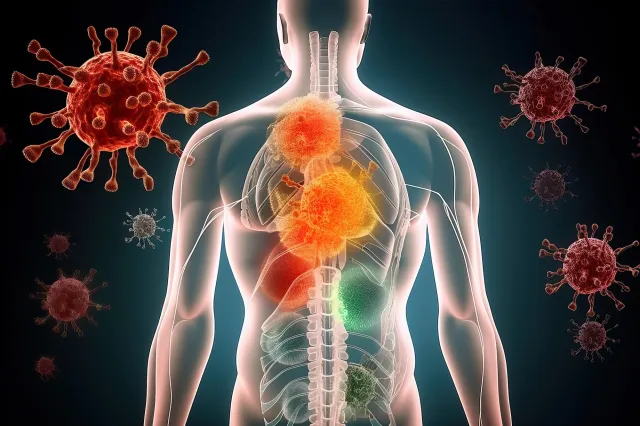Primary Immunodeficiency: Signs, Symptoms, and Treatments

Estimates suggest that more than 6 million people globally have primary immunodeficiency, but the vast majority of these cases are likely undiagnosed. Individuals with the condition are more susceptible to severe illness or infection than the general population. As a result, knowing if a person has a primary immunodeficiency is often critical, because proper treatment can help them maintain their health and improve their quality of life.
You may be wondering what the signs and symptoms of a primary immunodeficiency are and what treatment options are available. If you’re curious about the condition, here’s what you need to know.
What Is Primary Immunodeficiency?
Primary immunodeficiency is an umbrella term that describes a group of disorders that cause a person to have a weaker immune system. It is sometimes referred to as primary immune or immunodeficiency disorder. The condition is typically the result of one of two situations. First, it could be due to a person lacking a critical component of the immune system. Second, it could occur if a person’s immune system doesn’t work properly.
When an individual has primary immunodeficiency, they are more susceptible to contracting illnesses and infections. In addition, they often have difficulty fighting off an illness or infection when they get one.
People with primary immunodeficiency are also more likely to have an autoimmune disorder. Certain blood disorders are also more common for people with this condition, and they may have higher rates of cancer when compared with the general public.
- Frequent or recurrent infections, such as sinus, ear, or skin infections, as well as pneumonia, bronchitis, or meningitis
- Infections that resist treatment or are hard to treat
- Longer-lasting infections
- Blood disorders, including anemia or low platelet counts
- Internal organ infections or inflammation
- Digestive issues, such as nausea or diarrhea
- Delayed development or growth
- Autoimmune disorders, including lupus or Type 1 diabetes
The symptoms a person experiences can vary, so the presence or lack of some of those mentioned above may not necessarily be indicative of a person having primary immunodeficiency. However, if some of these symptoms are present, further examination is justified to determine if primary immunodeficiency is the potential cause.
How Is Primary Immunodeficiency Treated?
How primary immunodeficiency is treated varies from one person to the next and largely depends on the form. The nature of the individual’s condition as well as the symptoms present or that commonly recur are also potential factors for determining treatment options. As a result, treatments can include, but are not limited to:
- Antibiotics, antifungals, or antivirals (oral or IV) to treat infections
- Immune-boosting treatments, such as interferon-gamma therapy or immunoglobulin therapy
- Stem cell transplantation using functional cells from a compatible donor
- Gene therapy to correct any gene dysfunctions
- Growth factors to increase white blood cell counts
Preventative strategies are also widely used to reduce the likelihood of infections. These can include:
- Maintaining proper hygiene, including frequent handwashing after touching surfaces or before eating
- Dental care to minimize the risk of oral infections
- Keeping a balanced diet
- Remaining physically active
- Getting enough sleep
- Reducing stress levels
- Limiting exposure to people who are ill
- Getting doctor-approved vaccinations
All treatments and prevention steps should be overseen by a doctor or qualified medical professional to ensure that the approach is best suited to the individual. This will also increase the likelihood of a positive outcome.
Medical/scientific content reviewed by Kelsey Powell, MS, Medical Sciences
MORE FROM faqtoids.com

LIFESTYLE
Tick Identification 101: How to Spot and Differentiate Common Tick Species

LIFESTYLE
What to Expect from a High-Quality Cat-Only Boarding Experience

LIFESTYLE
What to Expect from Professional Saxophone Repair Services Near You

LIFESTYLE
Convenience at Your Fingertips: How to Find the Closest Nail Salon

LIFESTYLE
The Ultimate Guide to Choosing the Perfect Pizza Restaurant
